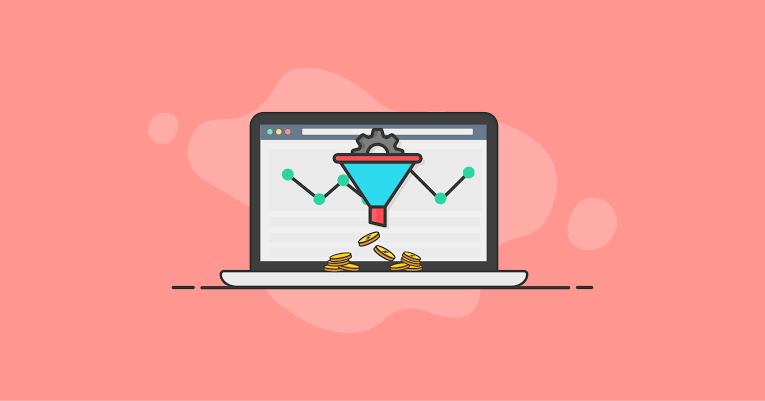In today’s fast-paced digital economy, Conversion Rate Optimization (CRO) has become a cornerstone strategy for sustainable business growth. Rather than focusing solely on increasing website traffic, CRO aims to make the most of existing traffic through turning more visitors into paying customers.
CRO is not optional, its essential for businesses aiming to grow smarter, compete effectively, and thrive in the digital marketplace.
In this blog, I’ll provide you complete guide to Conversion Rate Optimization for eCommerce and CRO top practices for small businesses.

What is Conversion Rate Optimization (CRO)?
CRO or conversion rate optimization is the process of enhancing the percentage of users who complete a desired action on a website or app like as making a purchase, filling out a form, subscribing to a newsletter, or clicking a specific link. Rather than focusing on driving more traffic, CRO concentrates on making better use of the existing traffic through understanding user behavior, identifying obstacles in the conversion path, and implementing
data-driven changes to boost performance.
This involves a combination of techniques such as A/B testing, heatmaps, user feedback, and website analytics to test and refine elements like headlines, calls-to-action, page layout, forms, and overall user experience. A well-completed CRO strategy not only improves sales and lead generation but also increase user satisfaction, lowers acquisition costs, and enhances the general return on marketing investment.
However, conversion rate optimization does not only enhance the CRO rates- this also support businesses to knowing or understanding about target audience in the activity of monitoring, testing, and also boost experience of the visitors.
In today’s competitive digital market, CRO is an essential tool for businesses aiming efficiently, convert more visitors into loyal customers, and achieve long-term success.
What is a Good Conversion Rate?
A good conversion rate is one that reflects how effectively your website turns visitors into customers or leads- and while there’s no universal benchmark, most industries consider a conversion rate between 2% to 5% to be average.
However, truly optimized websites usually achieve conversion rates of 5% to 10 % or higher, especially when they offer clear value, strong calls-to-action, and a seamless user experience,
What’s considered “good” also depends on the nature of your business, the type of conversion (e.g., sales, sign-ups, downloads), and the quality of your traffic.
Tip: Don’t just optimize for more conversion-optimize for the right conversion. Use tools like Google Analytics, Hotjar, or Microsoft Clarity to understand your visitors behavior, and segment your audience based on their intent, Sometimes, fewer but higher-quality leads or purchases can drive better long-term results than a high volume of low-value conversions. Focus on user experience, relevance, and clarity-because when people trust your site and feel guided, conversions naturally increase.
Monitoring is both the first and last step in Conversion Rate Optimization (CRO)
Data collection and analysis are the backbone of effective conversion rate optimization (CRO). Before making any changes to your website or marketing strategy, it’s crucial to gather accurate data about how users interact with your site, This includes both quantitative data ( like traffic sources, bounce rates, click-through rates, and conversion rates from tools like Google Analytics) and qualitative data (such as user feedback, heatmaps, session recordings, and surveys). Together, this information supports you identify what’s working, what’s confusing users, and where potential customers are dropping off.
Following are the sources of useful data:
- Heatmaps: This helps identify which parts of a page grab attention and which elements are being ignored. By analyzing heatmaps, businesses can spot design flaws, optimize layout, improve user experience, and ultimately increase conversions without guesswork.
- Interaction Metrics: Interaction metrics are key performance indicators in conversion rate optimization (CRO) that measure how users engage with your website. These metrics include actions such as clicks, scroll depth, time on page, form submissions, video plays, and button interactions. Through analyzing interaction metrics, you can understand which elements capture attention, where users hesitate, and how effectively your content drives action.
- Surveys: Surveys in CRO used to collect direct feedback from users about their experience, needs, and frustrations. Surveys can be placed on exit intent, after form submissions, or embedded in key pages. Through analyzing responses, businesses can make data-backed improvements that align with real user expectation, leading to better conversion rates.
Moreover, collecting data from diverse sources is important to understand user behavior and improve website performance. Above all sources are valuable for gather customers or users data, but one thing keep in mind always, that is your brands repute and values. What should you have to offer separately to others ? and which method is reliable for gathering data and customer satisfaction ? All these caution’s will support to increase your brands value and growth.
Best CRO Practices for Small Business
Optimizing your website for conversions doesn’t requires a massive budget- just smart strategy and the right tools. Here are 5 highly effective CRO best practices tailored specifically for small businesses:
1: Performance Issues and Speed Davit
Today’s in digital era, people are impatient in online shopping and now they are more demanding for fast speed during they come on your website for buying.
A slow-loading site frustrates users, increases bounce rates, and drastically reduces conversions, Studies show that even a 1-second delay in load time can cause a 7% drop in conversion.
Performance issues can stem from large image files, unoptimized code, too many plugins, or poor hosting. Shoppers are often mobile users for online shopping, kindly make sure about mobile speed too conversion rates are very slow on mobile. For fixing the issue of mobile speed convert your site into progressive website app or create mobile app for your site, might be mobile app will not useful by your customers. Because customers will not install a separate app for shopping.
Below are the example of mobile speed less than great. You can check how mobile speed effect your sale and irritative for customers.

2. Call-to-Action Craft
A strong call-to-action (CTA) can turn visitors into customers. CTAs shows on every push notification and also on every site page. When it comes to creating effective CTAs (Call-to-Action), there are several key factors to consider.
Here’s are key factors:
Clarity of Message: Your CTA should be direct and easy to understand. Avoid vague phrases-users should know exactly what will happen when they click.
Value Proposition: Clearly communicate the benefit of taking action. People are more likely to click if they know what they’re getting.
Placement on the Page: Position CTAs where they align with user intent-after valuable content, at the end of a product page.
Relevance to Content: Ensure the CTA matches the surrounding content. Irrelevant CTAs can feel pushy or out of place.
To craft an effective CTA, use strong, action-driven language that tells users exactly what to do, such as:
“Get Started,” “Download Now,” “Add to Cart,” or “Buy it Now,”.
Make sure your CTA communicates clear value by highlighting the benefit the user will receive.
Lastly, test different CTA variations regularly to fid out what resonates best with your audience. A well-optimized CTS not only drives action but also removes hesitation, ultimately boosting your overall conversion rate.

3. Use Social Proof and Trust Signals
When visitors see that others have had positive experience with your brand, they’re more likely to take action.
Example of social proof including:
- Customer testimonials
- Product reviews
- Start Ratings
- Case studies
Adding trust singles like secure badges, SSL certificates, recognized brand logos, and “as seen on” media mentions also reinforces your site’s reliability. Featuring the number of satisfied customers or real-time activity can create a sense of popularity and urgency. For small businesses, showcasing even a handful of genuine reviews or client logos can build enough trust to turn hesitant visitors into confident buyers.

4. You Build Easy Contact Option
Making it simple for visitors to reach you build trust and removes friction in the conversion process. Mention your contact number clearly on your site for customer approach, it will help you to build a strong bound between you & customers. Easy contact options enhance the likelihood of sale or lead.
Including multiple contact methods such as:
- Visible phone number
- Live chat
- Contact form
Ensure these options are accessible on all pages, especially product or service pages. A sticky “Contact Us” button, chatbot, or click-to-call feature on mobile devices can greatly increase usability.
5. Update Your Content
Outdated or unclear content can confuse users or fail to address their current needs. Users depends on clear and visual product descriptions and on visual content. There are three main components of product content that should be clear, visual and outstanding for your brands visuality or for your site traffic. Following are the key components of product content:
- Descriptions: For any product description play a vital role for product visibility and gaining more traffic. Providing useful and clear description about your product can be beneficial for your site and brand, because people now wants more reliable and clear visual of product unclear content can confuse users or fail to address their current needs. So, always select a high-quality image with unique product description.
Additionally, add bullet points, bold text, and visuals to make content scannable.
- Photos: On images you should don’t compromise, photo of the product should be zoomable and professional shots. Strong visuals not only increase user experience but also increase the chances of conversion by making your content more persuasive and credible.
- Video: Video is more reliable and beneficial now than using by a photo. For your product show that video where someone using the product, placing it in their home.

However, above five CRO practices combine can be the result of increasement conversion rates and satisfied users for small businesses. With the improvements of product itself and with efficient customers services can increase your product sale and will be more beneficial for your product growth. Small businesses must use these 5 CRO practices for growth and success.
Bottom Line
Conversion Rate Optimization (CRO) is essential for turning website visitors into customers, particularly for small businesses aiming to grow online. By focusing on user behavior, streamlining website performance, crafting clear CTAs, using social proof, revising content, and offering easy contact options, you create a smoother, more persuasive user journey.
Combine strong visuals with trust signals, optimize for speed and mobile, and always back decisions with data. CRO is not a one-time fic-it’s a continuous strategy that, when done right, leads to more engagement, higher conversions, and long-term business success.





